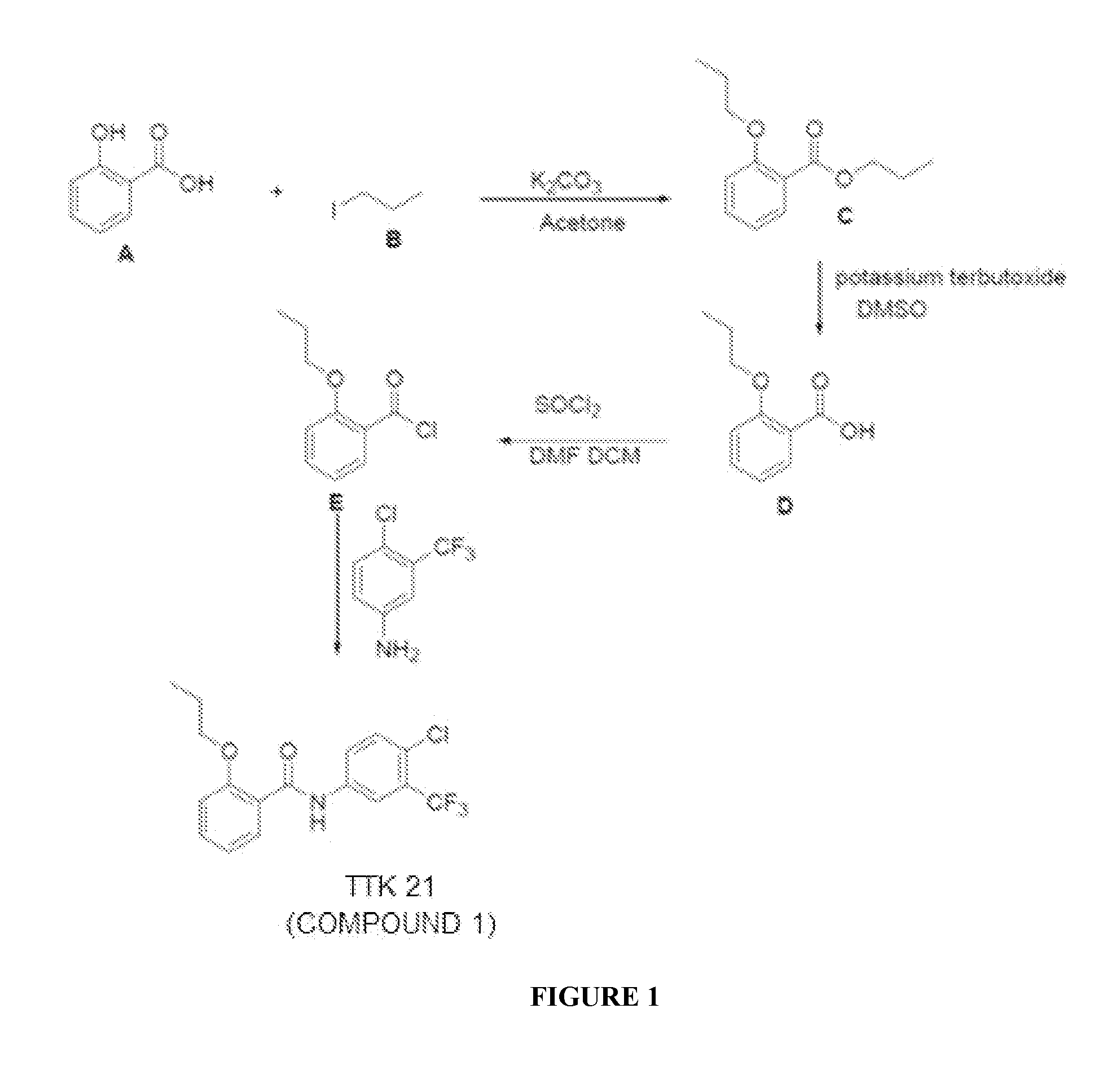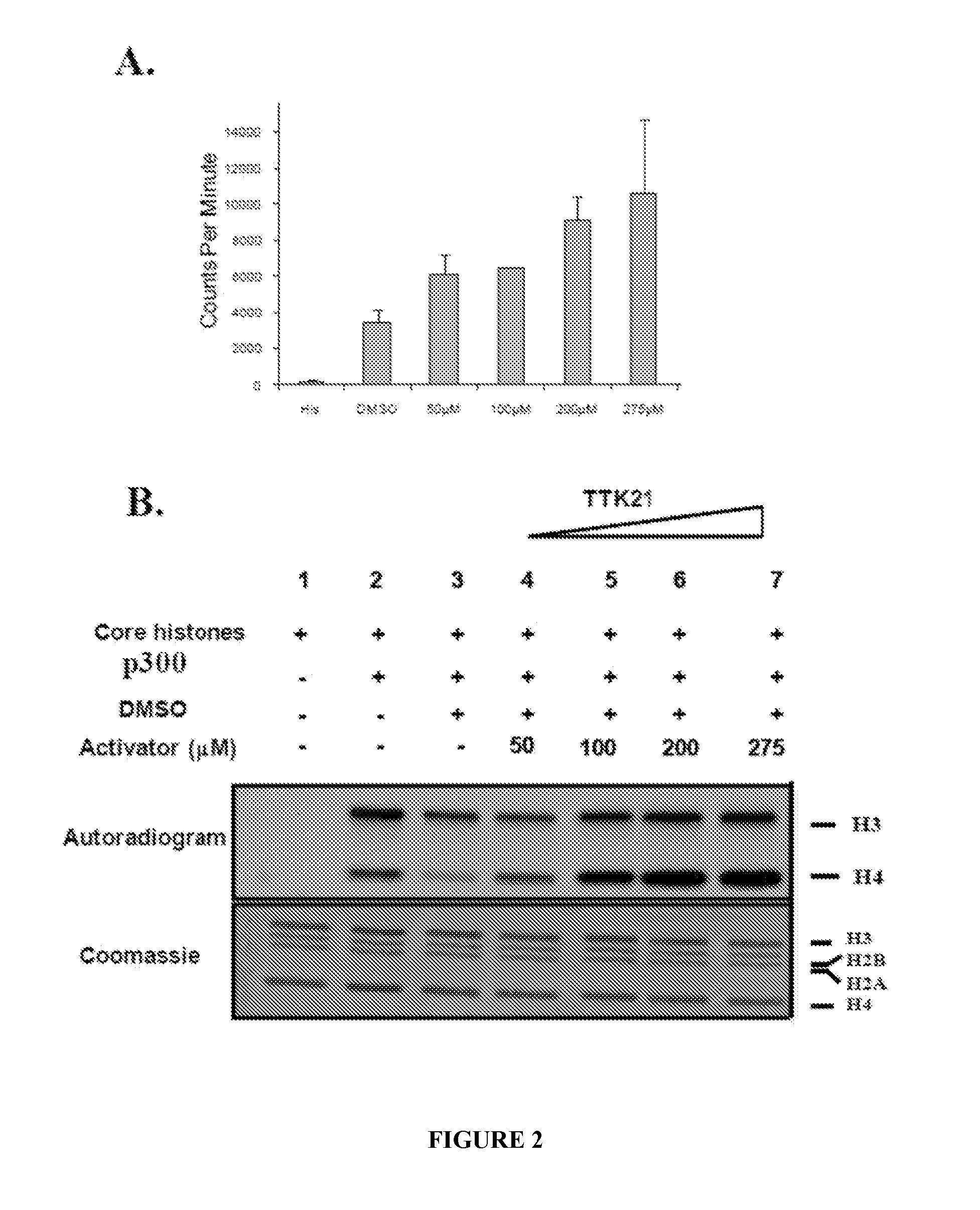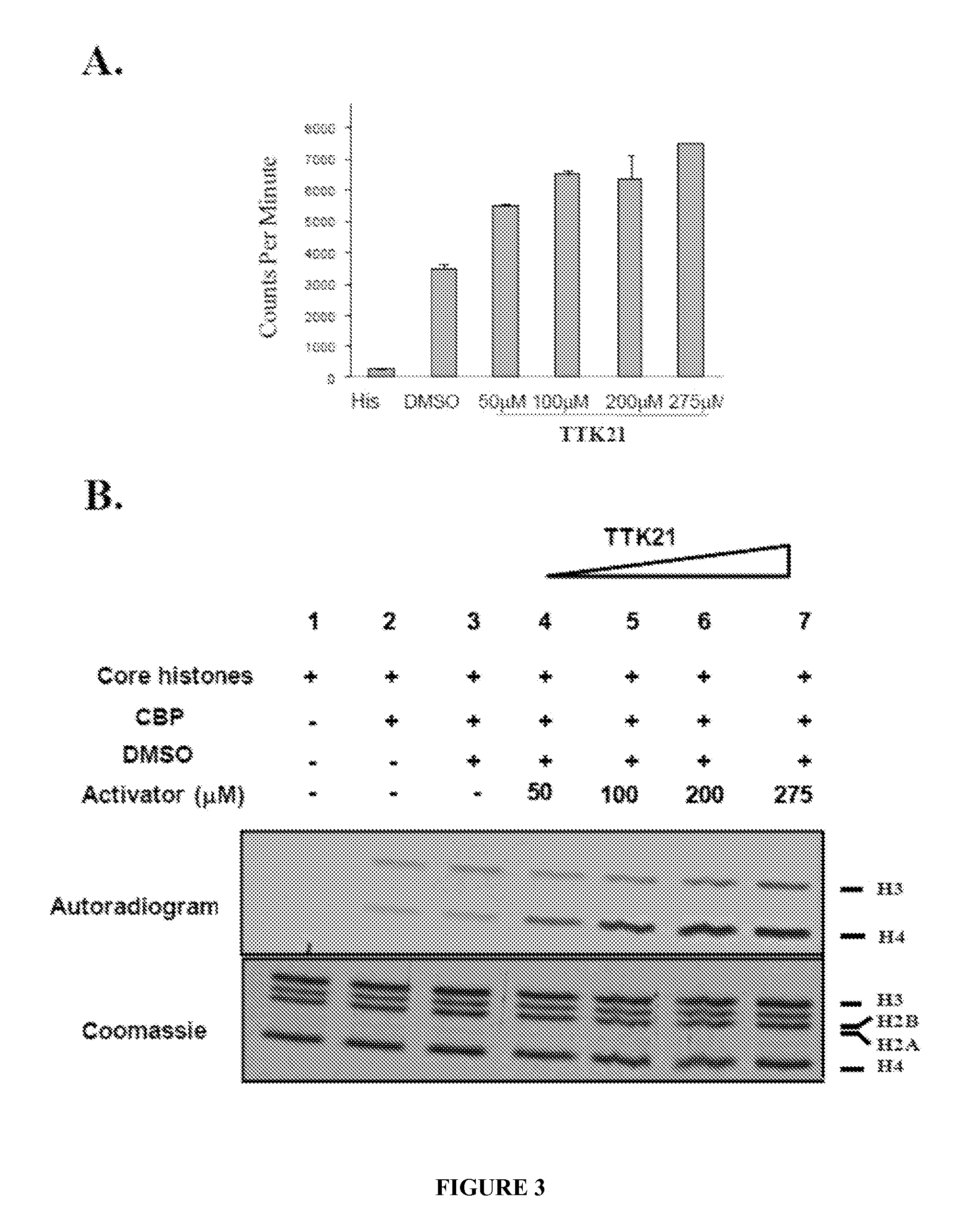Nanosphere- histone acetyltransferase (HAT) activator composition, process and methods thereof
- Summary
- Abstract
- Description
- Claims
- Application Information
AI Technical Summary
Benefits of technology
Problems solved by technology
Method used
Image
Examples
example 1
Screening of CTPB Derivatives
[0075]To understand the mechanistic aspects HAT activation various small molecules are derivatized from CTPB. The initial tail less derivative of CTPB is nomenclatured as N-(4Chloro-3-trifluoromethy 1-pheny 1)-2-ethoxybenzamide [CTB]. CTB is further derivatized to TTK series of compounds (COMPOUNDS 1-9) (FIG. 29 A). These compounds are subjected to histone acetyltransferase assays (filter binding assay) to check for their ability to activate p300 / CBP HAT. Core histones purified from HeLa nuclear pellet is used as the substrate and p300 purified from baculovirus infected Sf21 cells is used to determine the HAT modulation activity of these compounds. All compounds are used at a concentration of 200 μM in the HAT assays. TTK21 (COMPOUND 1) show significant increase in radioactivity counts compared to other compounds (FIG. 29 B).
[0076]Results: The HAT activation assays depict COMPOUND 1 to be one of the most efficient HAT activator when compared to other CTP...
example 2
Synthesis of COMPOUND 1
[0077]About 14.5 mmol of Salicyclic acid (A) is dissolved in acetone, and to the solution, about 43.4 mmol of Iodopropane (B) is added (FIG. 1). To the reaction mixture, about 43.4 mmol of anhydrous K2CO3 is added. The reaction mixture is refluxed at a temperature of about 70° C. to about 80° C. for about 3-4 hours. The reaction upon completion is evaporated in vacuum and worked up using ethyl acetate and water. The combined organic extract is dried over NaSO4 and then evaporated. The crude product thus obtained is purified using ethyl acetate and hexane (at a ratio of about 1:20) as an eluent, to yield 94% of the pure product Propyl 2-propoxy-benzoate (C).
[0078]To a solution of C (about 9 mmol) in DMSO, Potassium tertiary butoxide (about 11 mmol) is added at a temperature of about 0° C. The reaction mixture is stirred at a temperature of about 0° C. and for a time-period of about 30 minutes, followed by stirring the reaction mixture at room temperature (RT)...
example 3
Cell Permeability of COMPOUND 1
[0081]To check the cell permeability of COMPOUND 1, HeLa cells are treated with increasing concentrations (50 μM, 100 μM, 200 μM and 275 μM) of COMPOUND 1 and after 24 hrs, the cells are harvested and histones are isolated. Western blot analysis using antibody against acetylated H3 shows no alteration of histone H3 acetylation upon treatment of COMPOUND 1 (FIG. 4, compare lane 1 with 3, 4, 5 and 6). This shows the inability of the COMPOUND 1 molecule itself to enter into mammalian cells.
[0082]The cell permeability tests of COMPOUND 1 alone is also carried out in various neural cell lines such as SHSY cells and the results are found to be similar to HeLa cells. In other words, the results depict the inability of the COMPOUND 1 molecule alone to enter into mammalian cells.
PUM
| Property | Measurement | Unit |
|---|---|---|
| Temperature | aaaaa | aaaaa |
| Temperature | aaaaa | aaaaa |
| Temperature | aaaaa | aaaaa |
Abstract
Description
Claims
Application Information
 Login to View More
Login to View More - R&D
- Intellectual Property
- Life Sciences
- Materials
- Tech Scout
- Unparalleled Data Quality
- Higher Quality Content
- 60% Fewer Hallucinations
Browse by: Latest US Patents, China's latest patents, Technical Efficacy Thesaurus, Application Domain, Technology Topic, Popular Technical Reports.
© 2025 PatSnap. All rights reserved.Legal|Privacy policy|Modern Slavery Act Transparency Statement|Sitemap|About US| Contact US: help@patsnap.com



